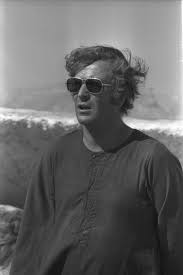American Revolutionary War 13 August Full Detail
American Revolutionary War
The American Revolutionary War (1775-1783), also known as the American War of Independence, was a world war that began with a conflict between Great Britain and its thirteen colonies declared its independence from the United States of America.
After 1765, increasing philosophical and political divergences exacerbated the relations between Great Britain and its colonies. Patriots protests against taxes without representation following the Seals Act and escalating to boycotts, culminating in 1773 with the destruction by the children of liberty a shipment of tea in the port of Boston. Britain reacted by closing Boston Harbor and adopting a series of punitive measures against the Massachusetts Bay agreement. The settlers of Massachusetts responded with resolutions of Suffolk and created a government in the shade that expelled campaign of control of Corona. Twelve colonies formed a continental congress to coordinate their resistance, establishing committees and conventions that effectively took power.
British efforts to disarm the militia in Concord Massachusetts led to open fights on April 19, 1775. Boston, then the besieged militants, forced a British evacuation in March 1776 and Congress named George Washington commander of the Continental Army. At the same time, an American abortive attempt to invade Quebec and increase the rebellion against the British. On July 2, 1776, the Continental Congress voted for independence and made its declaration on July 4. Sir William Howe launched an offensive against Colombia, captured New York and left for American morale at a low point. But victories at Trenton and Princeton restored Americans' confidence. In 1777, the British launched an invasion of Quebec under John Burgoyne to isolate the New England colonies. Rather than supporting this effort, Howe led his army to a separate campaign against Philadelphia and was defeated Burgoyne at Saratoga in October 1777 strongly.
The defeat of Burgoyne had dramatic consequences. France was formally linked to the Americans and entered the war in 1778, and Spain joined the following year as an ally of France, but not as an ally of the United States. In 1780 the kingdom Mysore attacked the British in India and the tensions between Great Britain and the Netherlands became an open war. In North America, the British proposed a "southern strategy" led by Charles Cornwallis, based on a loyalist uprising, but there were very few. Cornwallis suffered sales at King's Mountain and Cowpens. He retired in Yorktown, Virginia for an evacuation, but a decisive French naval victory deprived him of his escape. A French-American army led by the count of Rochambeau and Washington besieged the army of Cornwallis and surrendered in October 1781, without any sign of relief.
The Whigs in Britain resisted for a long time the pre-war conservatives in parliament and capitulation gave them the advantage. In early 1782, Parliament voted to end all offensive operations in North America, but the war continued in Europe and India. Great Britain remained besieged in Gibraltar but obtained a great victory over the French navy. On September 3, 1783, the belligerents signed the Treaty of Paris by which Britain agreed to recognize the sovereignty of the United States and officially put an end to the war. The French participation was decisive, but France obtained few benefits and booked crushing debts. Spain obtained minor territorial benefits but failed to restore Gibraltar. The Dutch were beaten on all fronts and were forced to cede territories to Britain. In India, the war against Mysore and her allies ended in 1784 without territorial changes.
Did you know that:
1 - The War of the American Revolution has the sixth-largest participation in the US combat force?




Comments
Post a Comment